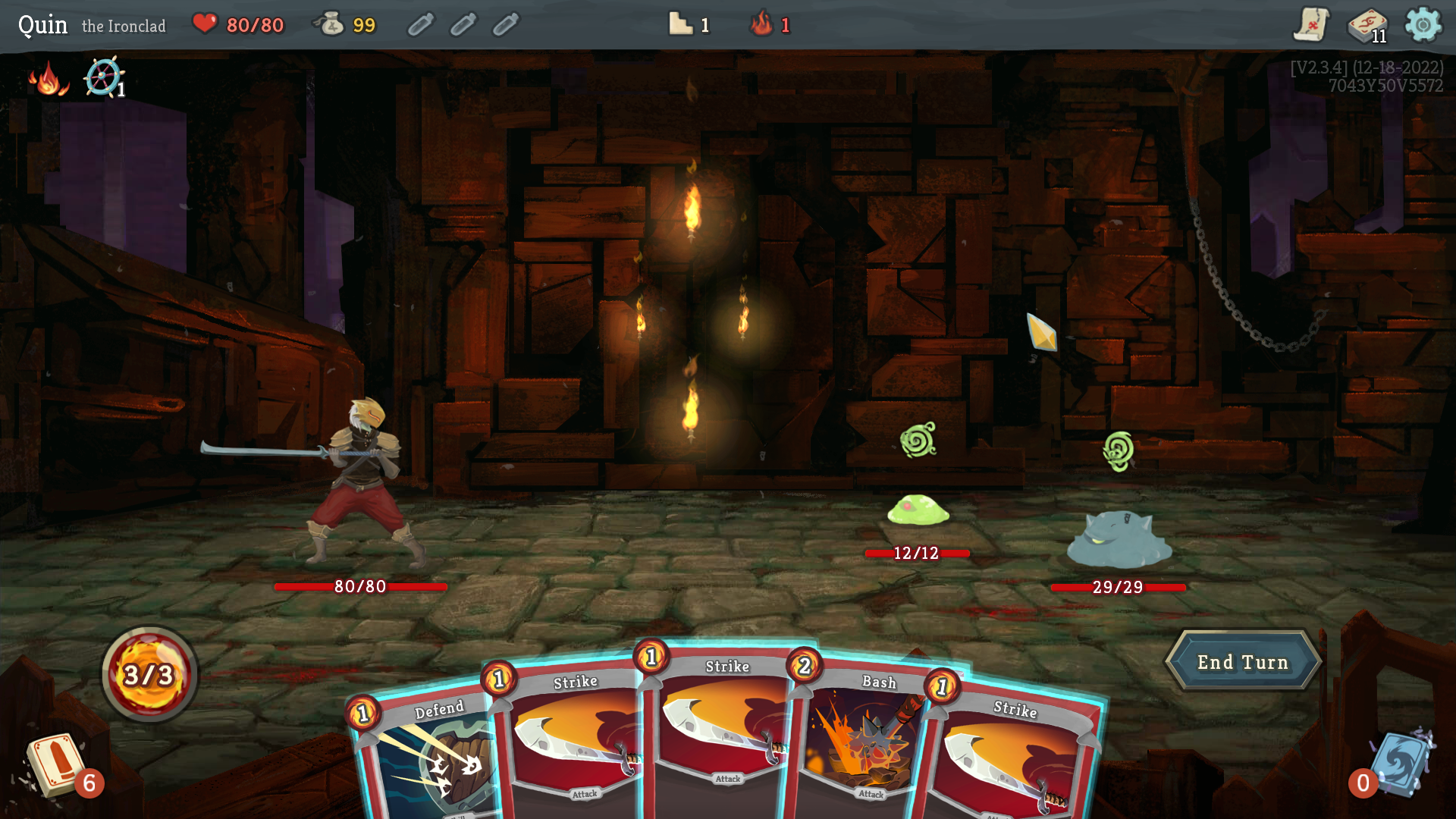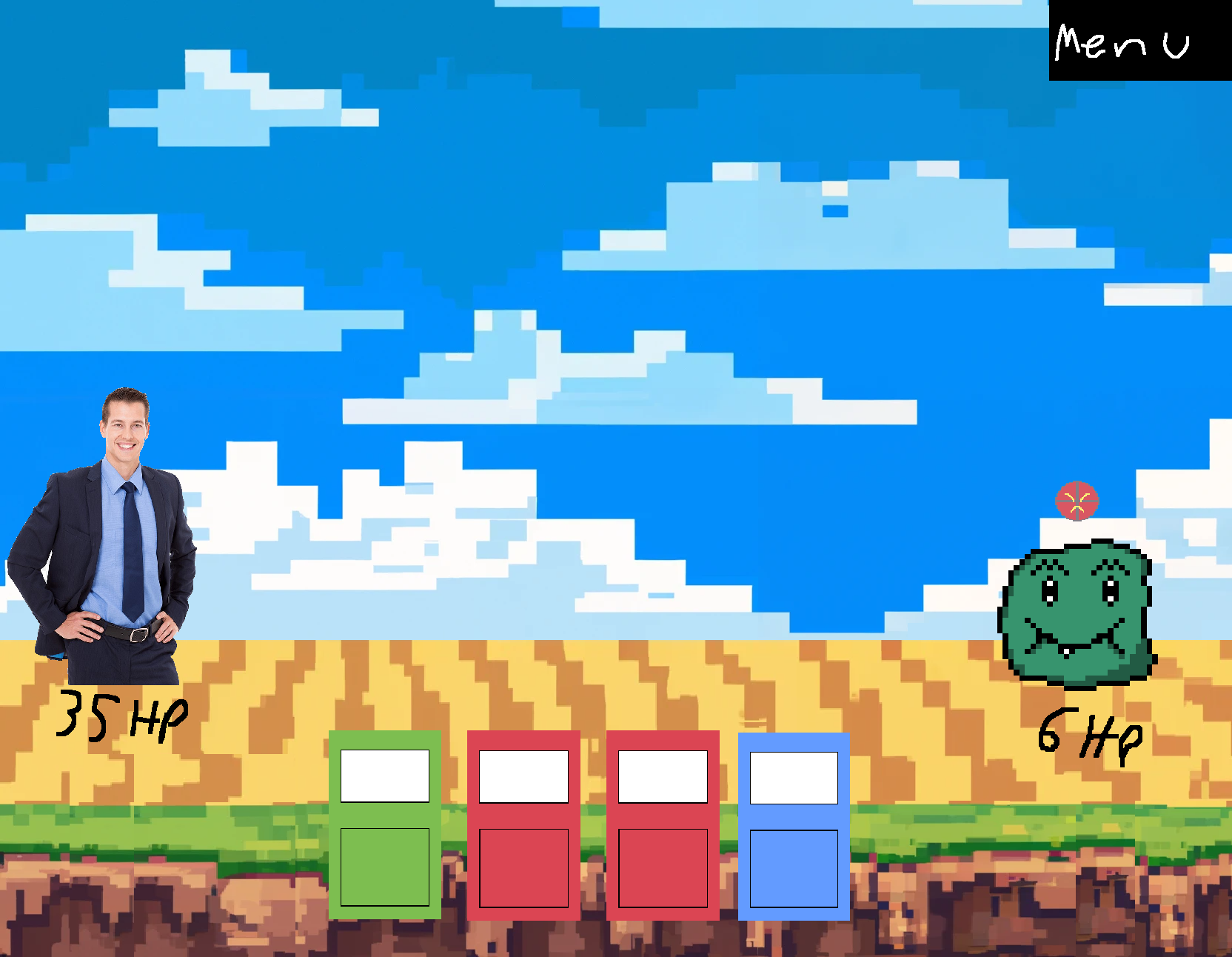Concept Log
Overview
Working Title
Sinister Reasons
Concept Statement
Sinister Reasons is a turn based rpg card game. The player gets a new hand of cards each turn and must choose which cards to play to best combat opponents while conserving health and resources.
Genre
Deckbuilding Roguelike
Sinister reasons consists or isolated 'runs' ending in death or victory, it has mechanics for gaining and losing cards throughout a run. Like other games in the genre it adopts the standards of a cycling deck that gives 5 new cards each turn of which 3 can be chosen.
Concept Creation Process
Originally thinking about a turn based combat system with multiple opponents and allies, I wondered what mechanics would serve to dampen the effects of outnumbering, so that in (for example) an open world game, bringing more characters wasn't too overwhelming of an advantage. The system I came up with to solve this was counters and an activities queue, each time a character was attacked they would perform an action from their queue. This allows outnumbered characters to stand more of a chance.
I noticed that this activities system also leaves room for a lot of depth, choices in what attacks/moves to use based on how the opponent will respond, it was this part that lead me to thinking about adapting it to a different setting. This system solves some problems in existing roguelikes, with there being no difference in what order cards are played and often the correct cards to play is very obvious and just comes down to simple arithmetic: get enough block to not take damage, use excess resources to attack.
After applying the system to the roguelike deckbuilder genre, it was just a matter of subtracting elements that were no longer needed to simplify the game. Removing the map system was the first obvious step, since it adds very little depth, is confusing to new players and trivial to experienced players. The second mechanic I removed was card costs, if most cards would cost 1 energy to play anyway, it is simpler to remove the concept of costs entirely and give 3 plays per turn no matter what. The third mechanic I removed was relics or artifacts, permanent in-run power ups with unique effects, implementing them would take too much time, and I had a better plan for permanent upgrades.
The second big break I made from standard deckbuilders was to bundle the cards into equipment, this means the size of a deck is relatively fixed, making infinite combos and other balance-breaking strategies less achievable. Bundling cards into equipment allows a natural way to gain permanent upgrades without the complication of relics, upgrading or merging equipment instead.
This design was influenced by: Fights in Tight Spaces for the simplified card design and enemy interactivity, Hellcard for the inspiration of enemy responses to actions, and Slay the Spire for the layout and gameplay style (see figure 1)

figure 1 - Slay the Spire's layout
Audience & Competitive analysis
Everyone, deckbuilding roguelikes have been shown to be widely popular among a diverse audience. There is also no excessive violence or requirements of mechanical skill or reaction time that would turn off some players. I aim to make the game easy to pick up by anyone, but still have a degree of depth to it that keeps more hardcore players interested.
This game sits alongside other deckbuilding roguelike titles with unique depth-adding mechanics like Dream Quest, Monster Train, and Alina of The Arena terms of audience appeal.
With the steps I have taken to simplify the game, as well as the art style (more cute, less grim and bloody), I hope that it will be more accessible than other titles in the genre. At the same time, by attempting to make it more balanced and add more interactivity with enemies, it should provide a more consistent challenge for more 'hardcore' players who are interested in optimizing and figuring out the best strategies.
Game treatment & Concepts
Setting
There's so many cute creatures in this dungeon! But they drop coins... our protagonist appears to be more motivated by greed than by morals. And so they embark on a journey to become strong and rich.
Overview of Mechanics
Player
The player has a set amount of health, if this reaches zero they die. Each turn the player gets given 5 cards of which they can choose up to 3 to play, they can also choose to swap equipment, changing the composition of their deck. Playing cards can apply statuses to self or enemies, deal damage to enemies, and add block to self. Each point of block prevents one damage but is removed after the enemy turn.
Enemies
The player can be matched up against any number of enemies, they each have a queue of actions called their activities. Each time an enemy is attacked they will perform an action. On an enemy's turn they will choose the frontmost activity and perform a more powerful version of it, and then refill their activities with new actions. As the game progresses the enemies will grow stronger forcing the player to keep up.
Equipment
At any time, the player has 5 pieces of equipment, head, chest, feet, and two hands. Equipment typically comes with 2 to 4 cards and sometimes some permanent stats, powerful equipment might give a bonus to all attack damage, while cursed equipment might have powerful abilities but have a stat penalty. As well as the 5 equipped pieces of equipment, a player can carry 3 pieces in their inventory, they can choose to swap one piece of equipment each turn. Equipment can be bought, sold, merged and upgraded, this is the primary progression mechanic.
Design
Sticking with simplicity, card draw is generally to be avoided, each card should ideally do something direct and concrete, rather than acting on other cards. Minimizing the number of keywords and maximizing the use out of each one is a good idea. Cards should have 1 to 3 simple effects, no if/then things, each effect should be summmarizable in 5 words or less, for example "attack 6, daze enemy" or "block 30, stun self".
Enemies are complex enough as is with the acitivites system, they usually do not need unique effects. Varying numbers can mostly suffice for most non-boss enemies, the focus is on what the player does rather than the enemies.
By seperating cards into tiers and generating upgrades randomly from these tiers, we can save a lot of work while still having interesting upgrades. Generating an equipment upgrade is as simple as randomly picking a number of its cards/stats, and randomly picking replacements for those of a higher tier.
Art Style
The main scenes will be combat and the upgrade. The combat scene consists of a number of cards that can be played at the bottom of the screen, the player on the left with their health and status, and the enemies on the right with their health and status. The upgrade scene will allow clicking on various equipment and seeing the costs and effects of upgrading.
The enemies, background, and cards will be pixel art. The exception to this will be our main character, a stock image businessman to show that he is out of place in this world. Pixel art is quick enough to create for a game of this scale where other art styles might take too long.
figure 2 - the combat screen
References
Figure 1 - Mega Crit Games, Slay the Spire
Figure 2 - Art by Liam Quin
Sinister Reasons
Yet another roguelike deckbuilder
| Status | In development |
| Author | chlobes |
| Genre | Card Game |
More posts
- DocumentationMay 26, 2023
- devlog week 6 - ui and polishMay 26, 2023
- devlog week 5 - testing feedbackMay 21, 2023
- Testing formMay 18, 2023
- devlog week 4 - visual effectsMay 14, 2023
- devlog week 3 - enemy actionsMay 07, 2023
- devlog week 2 - enemy interactionApr 30, 2023
- Devlog week 1 - very basic prototypeApr 23, 2023
Leave a comment
Log in with itch.io to leave a comment.